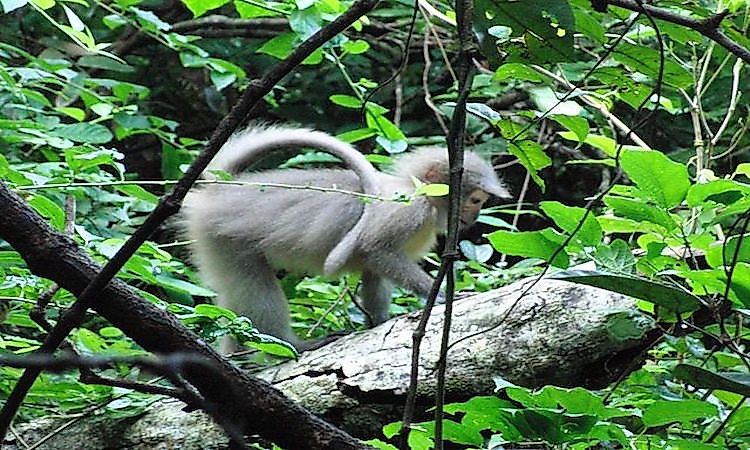Ecological Regions Of Kenya

Kenya is a land of Highlands, rift valleys, great lakes, and considerable variations in precipitation and temperature. Located in East Africa, Kenya borders Somalia, Tanzania, Uganda, Ethiopia, and Sudan, countries with which the country shares the majority of its ecoregions. Kenya prides in great flora and fauna diversity and progressive conservation efforts.
Ecological Regions Of Kenya
East African Montane Forest
The East African Montane Forest ecoregion stretches from Kenya to its neighbors of Uganda, Tanzania, South Sudan, and Tanzania and it is classified in the tropical and subtropical moist broadleaf forests Biome. Situated in isolated pockets in some Eastern African mountain ranges, the ecoregion covers the Aberdare Ranges, Mount Kenya, Mount Elgon, Nguruman Scarp among other low-lying mountains along the country’s eastern Rift Valley. The region’s temperature falls below 10 degrees Celsius during the cold season and rises over 30 degrees Celsius in the warm season. Frosts can occur at high elevations. Annual Precipitation is recorded between 1,200 and 2,000 mm.
The region sits in the Rift Valley and has several active volcanoes such as Mt. Kenya. The ecoregion is mostly mountainous, and its volcanic base rocks make the region’s soil fertile and conducive to agriculture. The region is characterized by montane and submontane forests alongside bamboo and heathland grassland at higher elevations. Fauna in the region includes the Antelope bongo, eastern tree hyrax, shrews and Jackson’s mongoose. The Aberdare cisticola, Sharpe's Longclaw, and the hunter’s Cisticola are some of the avifauna present in the region.
Land transformation for agriculture, poaching, and human-animal conflict have all negatively impacted on the ecoregion. Protected areas in the area include the Mt. Kenya National Park and Aberdare Forest Reserve.
East African Montane Moorlands
The East African Montane Moorlands ecoregion is classified in the Montane Grasslands and Shrublands Biome. This ecoregion is situated above 3,500 meters of several East African peaks including Mt. Kenya. Montane forests and alpine moorlands characterize the region’s vegetation with the dominant flora being Lobelias and Giant groundsels.
Avifauna includes the stripe-breasted tit, Rockefeller's Sunbird, francolin, and regal sunbird. Among the threats facing the ecoregion are extensive agriculture, cattle grazing, and fire. Protected areas in the region include the Mt. Kenya Biosphere Reserve and Mt. Elgon National Park.
Masai Xeric Grasslands And Shrublands
The Masai Xeric Grasslands and Shrublands ecoregion are classified in the Deserts and Xeric Shrublands Biome. The ecoregion is situated in the country’s northern region, and it encompasses desert, savanna, wetland, and woodland. The region’s climate is hot and dry with average maximum and minimum temperature recorded at 30 and 18 degrees Celsius respectively. Mean annual precipitation is recorded between 200 and 400 mm. During years of high precipitation, huge pockets of grassland occur. Most of the ecoregion is characterized by dwarf shrublands.
Lake Turkana, found in the ecoregion, supports more than 300 species of avifauna and it is a significant stop for migratory birds. The ecoregion is home to multiple mammalian species such as the lion, zebra, oryx, cheetah, gazelle, giraffe, and elephant. Most of these animals are conserved in the Sibiloi National Park. Overgrazing, poaching and soil erosion are some of the environmental threats to the ecoregion.
East African Mangroves
The East African Mangroves is a mangrove ecoregion in Kenya. The region lies along the country’s Indian Ocean coast and some of its principal rivers such as the Tana and Sabaki rivers. Rainfall is recorded as high as 1,500 mm and the region experiences strong ocean currents.
The mangroves provide significant ecological functions for fauna especially sea turtles and dugong because they are the breeding grounds and nurseries. Avifauna includes the Mangrove Kingfisher and the little migratory stint, gray plover, yellow-billed stork and greater sand plover. Antelopes, elephants, and African buffalo graze along the mangroves.
The ecoregion is continuously threatened by domestic and industrial pollution, aquaculture, and rapid urbanization. Extensive mangrove forests are protected in Kenya in areas such as the Kiunga National Marine Reserve.
Other Ecoregions In Kenya
The East African Coral Coast is the only Marine ecoregion in Kenya. The freshwater ecoregions of Kenya are Kenyan Coastal Rivers; Lake Edward; Lake George; Lake Kivu; Lake Turkana; Lake Victoria; Pangani; Shebele-Juba Catchments; Southern Eastern Rift. Other ecoregions in the country are East African halophytes; Eastern Arc forests; Northern Acacia-Commiphora bushlands and thickets; Northern Zanzibar-Inhambane coastal forest mosaic; Somali Acacia-Commiphora bushlands and thickets; Southern Acacia-Commiphora bushlands and thickets; Victoria Basin forest-savanna mosaic and Zambezian flooded grasslands.
Ecological Regions Of Kenya
| Ecological Regions of Kenya | Biome |
| East African Coral Coast | Marine |
| East African halophytics | Flooded Grasslands and Savannas |
| East African mangroves | Mangroves |
| East African montane forests | Tropical and Subtropical Moist Broadleaf Forests |
| East African montane moorlands | Montane Grasslands and Shrublands |
| Eastern Arc forests | Tropical and Subtropical Moist Broadleaf Forests |
| Kenyan Coastal Rivers | Eastern and Coastal Freshwater |
| Lake Edward | Great Lakes Freshwater |
| Lake George | Great Lakes Freshwater |
| Lake Kivu | Great Lakes Freshwater |
| Lake Turkana | Nilo-Sudan Freshwater |
| Lake Victoria | Great Lakes Freshwater |
| Masai xeric grasslands and shrublands | Deserts and Xeric Shrublands |
| Northern Acacia-Commiphora bushlands and thickets | Tropical and Subtropical Grasslands, Savannas, and Shrublands |
| Northern Zanzibar-Inhambane coastal forest mosaic | Tropical and Subtropical Moist Broadleaf Forests |
| Pangani | Eastern and Coastal Freshwater |
| Shebele-Juba Catchments | Nilo-Sudan Freshwater |
| Somali Acacia-Commiphora bushlands and thickets | Tropical and Subtropical Grasslands, Savannas, and Shrublands |
| Southern Acacia-Commiphora bushlands and thickets | Tropical and Subtropical Grasslands, Savannas, and Shrublands |
| Southern Eastern Rift | Eastern and Coastal Freshwater |
| Victoria Basin forest-savanna mosaic | Tropical and Subtropical Grasslands, Savannas, and Shrublands |
| Zambezian flooded grasslands | Flooded Grasslands and Savannas |











